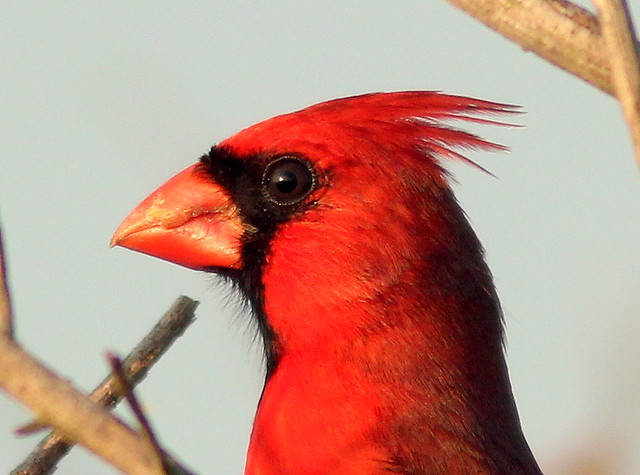
Ludlow Griscom wrote, in 1923 (Birds of the New York City Region, Amer. Mus. Nat. Hist., NY), that the "Eastern Cardinal" had been "extirpated" from the area. Its return to my home turf in New Jersey during the 1930s and 40s was variously attributed to milder winters and the increasing number of bird feeding stations.
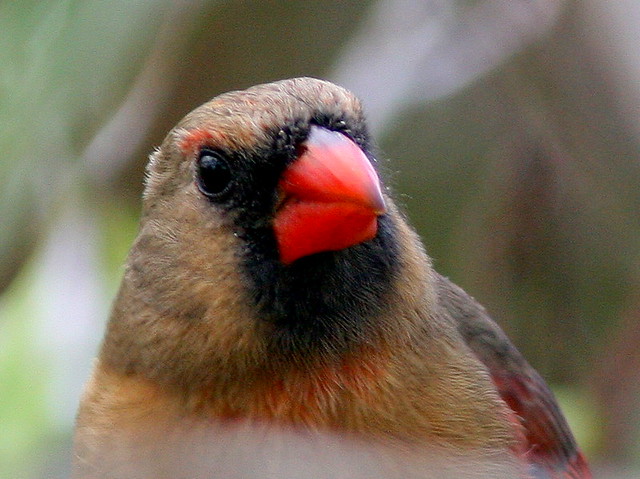
I was gifted with a copy of Allan Cruickshank's 1942 edition of Birds Around New York City, which became my point of reference when I found an unusual bird or one during an unexpected time of year. Cruickshank described the cardinal as "...slowly but steadily re-establishing itself northward... Like all permanent residents which reach the northern limits of its range here, the Cardinal is subject to severe winter killings."
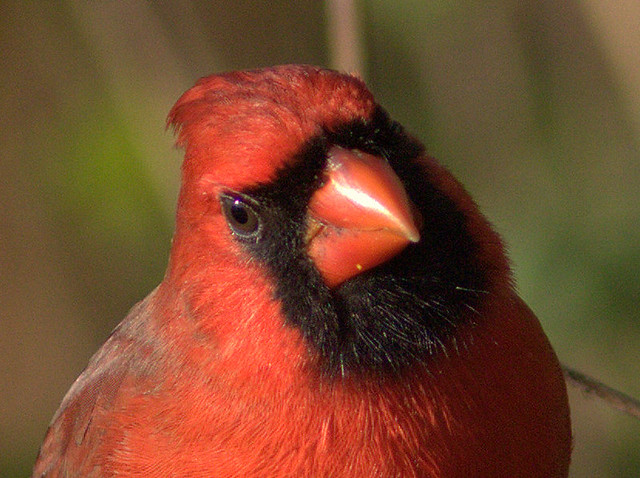
Later, John Bull would write: "The increase and spread of the Cardinal in the New York City region, as well as throughout most of the northeast, particularly since the mid-1940s, and more especially in the 1950s, has been positively phenomenal. Few, if any, species have made such gains" (Birds of the New York Area, 1962). Since that time we have seen extraordinary range expansions of other bird species, for example the House Finch, Cattle Egret, Boat-tailed Grackle, White-winged Dove, Eurasian Collard-Dove and the steady northward shift of the breeding grounds of many native land birds.

In the above portraits I have provided equal space for both male and female Northern Cardinals, for if one captivates us with color, the other subdues us with softness.
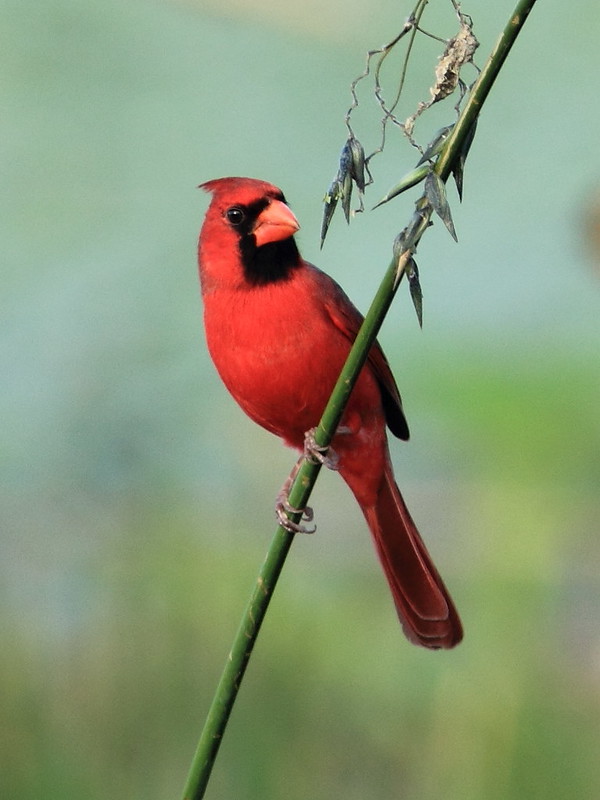
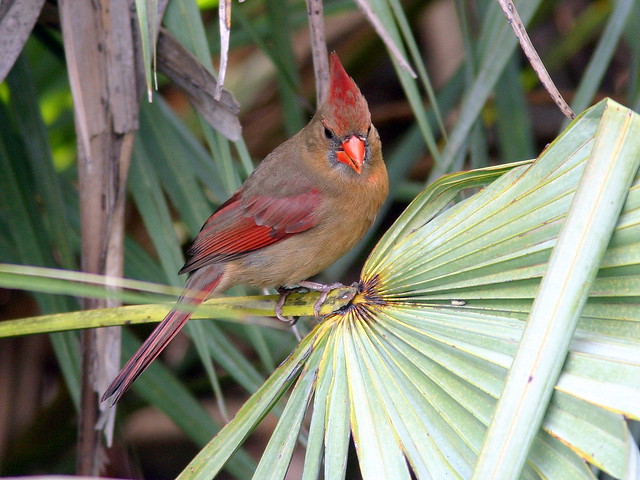
Cardinals may be North America's most welcome visitors to water features and back yard feeders.
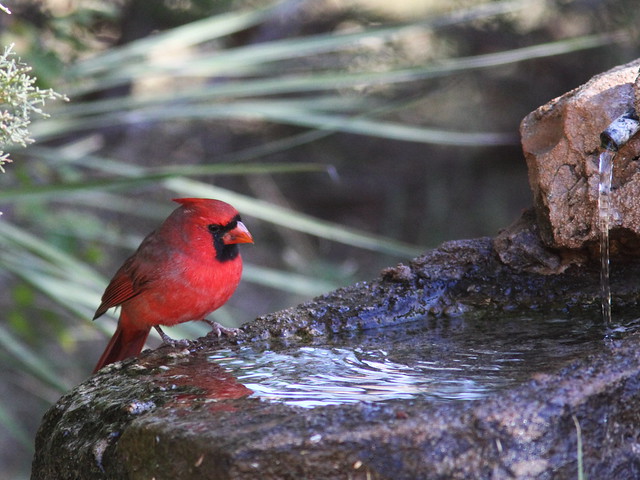
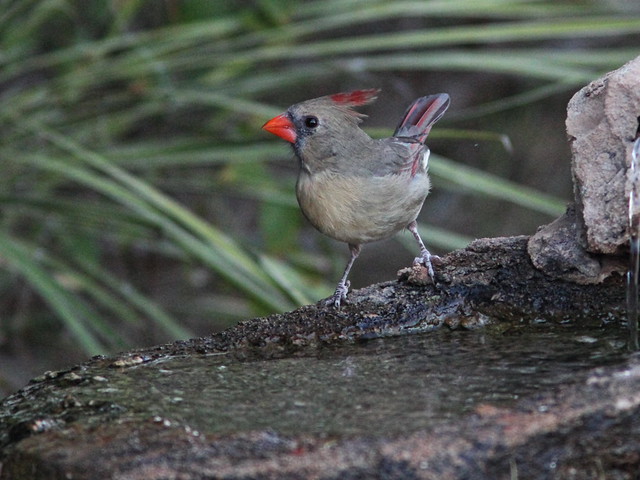
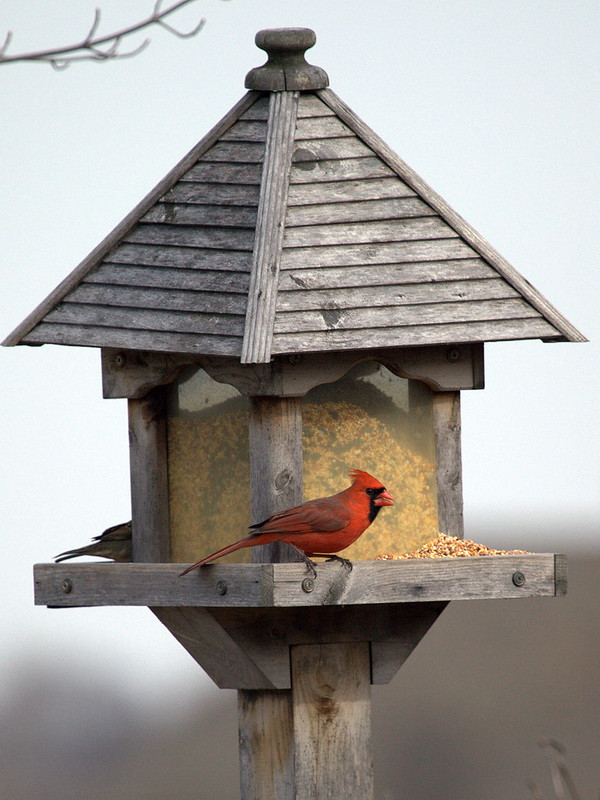

Because I took up photography after moving to the sunny South, I suffer a notable absence of images of red cardinals on white snow, a magnificent combination. However, if you look closely at this coy female peering around our daughter's feeder in Illinois, you may catch a few snowflakes.
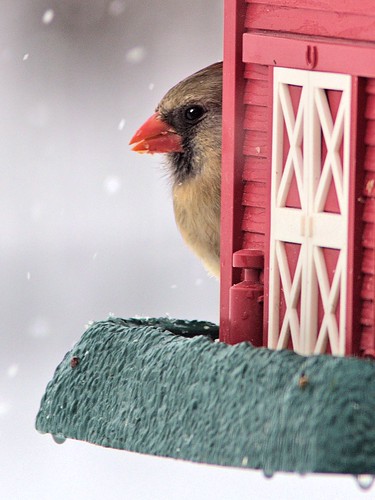
In the interest of fairness, I should also embarrass this adolescent male before he has time to dress in his finery. Note the dark bill which will become fully red as an adult.

An adult male in molt can be a sorry sight. I can't blame him for hiding behind a leaf!
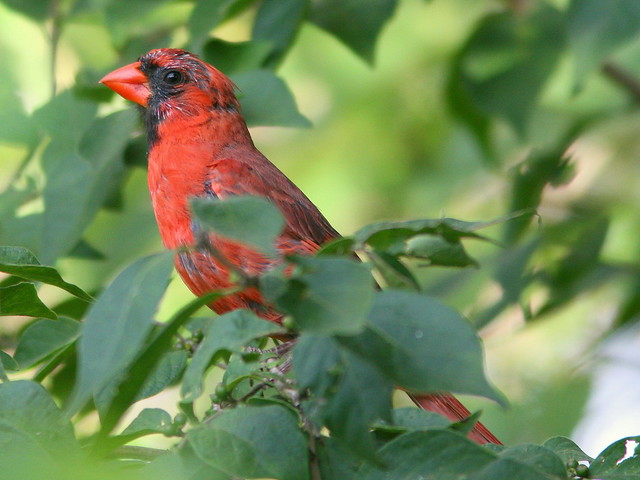
laughing that you included the awkward teen and molting male, too. :)
ReplyDeletei think these birds get more folks into birding in n. america than probably any other species. lovely shots!
Wonderful series on the Cardinsals. They are all beautiful! Happy Sunday!
ReplyDeleteBeautiful! :)
ReplyDeleteA lovely set of pictures and an equally informative set of information Ken. Before reading your words I didn't realise that the Cardinal had only recently re-established itself. The information is heartening news for all those people in North America who devote love, time, energy and money in feeding Cardinals through the winter months.
ReplyDeleteVery beautiful photos and great details.
ReplyDeleteA great series on one of my favorite birds. Love that first closeup.
ReplyDeleteYou can't help but be delighted by the cardinal.
Spectacular photos of this beautiful bird! The focus on the eye in the first shot is incredible!
ReplyDeleteWonderful photos of the cardinals! Both the male and the female are beautiful.
ReplyDeleteFabulous series! You have captured the beauty of this bird. :)
ReplyDeleteFabulous Ken.
ReplyDeleteBeautiful bird and it is very interesting to read how their range has changed over the years.
ReplyDeleteGreat series about this beautiful bird.
ReplyDeleteVery good series!!!
ReplyDeleteLove the vibrancy of colors. I especially like the one with snowflakes. :)
ReplyDeleteHI Kenneth Brilliant bird shots of this beautiful Cardinals
ReplyDeleteWhen we lived in MO, we had one Cardinal pair that I not sure if the male ever regained its crest. I flew bald for quite some months. My St. Louis Cardinal fan hubby is bald as can be. We could not resist drawing a comparison! Love your beautiful pictures.
ReplyDeleteWhen as I saw your cardinal thumbnail above mine over on WBW I wanted to delete my post ;>)...I love this bird though and enjoyed your much better pictures and much much better information about it. Thank you.
ReplyDeleteThey are great looking birds - if you get them at bird feeders, I can see why the number of feeders increased!
ReplyDeleteCheers - Stewart M - Melbourne
No matter the molting is just a phase of 'awkward'...we humans have that too...in some way or another!!!
ReplyDeleteI so enjoyed each and every image this time 'round Ken. And, I must apologize for being so tardy in dropping by to visit/view....we are still trying to get back into routine from our trip.